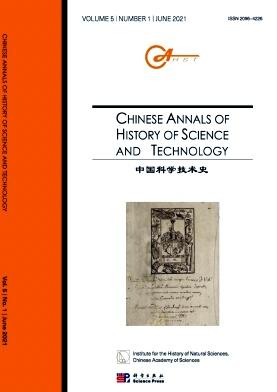Experimental Research on the South-Pointing Loadstone Spoon (Sinan)1
Chinese Annals of History of Science and Technology
Pub Date : 2019-06-01
DOI:10.3724/SP.J.1461.2019.03021
引用次数: 0
Abstract
: In the 1940s, Wang Zhenduo 王振铎 re-created the sinan 司南 (south-pointing loadstone spoon) mentioned in ancient texts. However, subsequent researchers were unsuccessful in their attempts to replicate this design, resulting in longstanding questions over its feasibility. Loadstones with high natural remanent magnetization acquired today resemble the magnetism of those recorded in premodern Chinese documents. By simulating ancient stoneware processing techniques, a loadstone was cut and polished into a spoon shape. It was found that during the course of processing the loadstone spoon, demagnetization was negligible, while after completion, the internal magnetic field was rebalanced due to the change in shape, and the magnetic moment decreased slightly then stabilized for the long term. Experiments of this sort carried out by the author have testified to the enduring and reliable directivity of the resulting loadstone spoon. Paleo-magnetic research indicates that over the past two millennia the horizontal component of the geomagnetic field intensity in northern China underwent a clear M-shaped development. The level in the Qin and Han dynasties is approximately double that of the current day. Using a simulated ancient geomagnetic field, experiments have revealed that multiple methods, such as the “water floating method ” and “ hanging method ,” could manifest a degree of geo -directivity. The comprehensive studies carried out demonstrate that the loadstone spoon is the most optimal among these diverse means for attaining magnetic directivity from the Pre-Qin period (before 221 BCE) to the Tang dynasty (618 – 907 CE) in view of the availability of loadstone, the state of the geomagnetic field, and existing knowledge and techniques.南向磁石勺(思南)试验研究
在20世纪40年代,王振铎(王振铎)重新创作了古代文献中提到的司南(南指磁石勺)。然而,随后的研究人员未能成功地复制这一设计,导致了对其可行性的长期质疑。今天获得的自然剩余磁化强度较高的磁石与中国前现代文献中记载的磁石相似。通过模拟古代石器加工技术,将一块磁石切割并打磨成勺子形状。研究发现,磁石勺在加工过程中,退磁可以忽略不计,加工完成后,由于形状的变化,内部磁场重新平衡,磁矩略有下降,然后长期稳定。作者进行的这类实验证明了所得到的磁石勺具有持久和可靠的指向性。古地磁研究表明,在过去的两千年里,中国北方地磁场强度的水平分量经历了一个明显的m型发展。秦汉时期的水平大约是今天的两倍。利用模拟古代地磁场,实验揭示了多种方法,如“水浮法”和“悬挂法”,可以表现出一定程度的地质指向性。综合研究表明,从先秦时期(公元前221年以前)到唐朝(公元618 - 907年),考虑到磁石的可用性、地磁场的状态以及现有的知识和技术,磁石勺是获得磁指向性的各种方法中最理想的方法。
本文章由计算机程序翻译,如有差异,请以英文原文为准。
求助全文
约1分钟内获得全文
求助全文

 求助内容:
求助内容: 应助结果提醒方式:
应助结果提醒方式:


